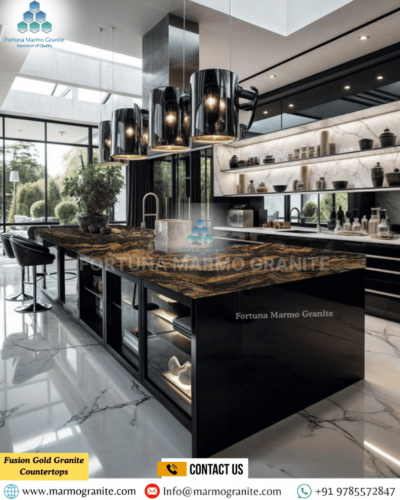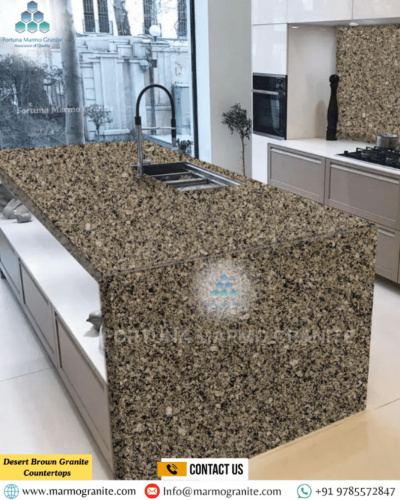Granite Countertop Packaging for Export: Best Practices for Safe Transit
Granite countertops are a symbol of luxury, durability, and natural beauty, adding timeless character and value to any space. Their demand spans the globe, from Milan's design studios to bespoke kitchens in New York. Granite Countertop Packaging for Export, For manufacturers and suppliers, transporting these heavy, delicate, and often irregularly shaped stones safely is a complex task. In addition, Ocean and land shipments expose them to vibrations, impacts, temperature swings, and humidity—all of which can damage the stone if not properly managed.
Moreover, Specialized packaging is therefore essential, not optional. Custom-built crates provide maximum shock absorption, while padding, corner reinforcements, and secure fastening keep each slab stable and protected from external pressures.
The Stakes Are High: Why Packaging Matters More Than You Think
Imagine the financial loss, reputational damage, and logistical challenges caused by a damaged granite shipment. In addition, You not only face replacement and re-shipping costs but also risk losing customer trust and future business. Proper packaging is not an expense; it is an investment in product integrity, customer satisfaction, and your company's bottom line. Consequently, Each granite piece showcases nature's artistry — a delicate mix of color, texture, and character — that must remain intact from your facility to its final destination. Moreover, Careful, multilayered packaging is essential, not just a formality. Granite's unique traits — its weight, brittleness, and polished surface — require a specialized approach beyond standard packaging materials.
Understanding the Journey: Risks in Export Transit
Before we dive into solutions, let's understand the challenges:
- Vibration: Constant shaking during truck, rail, or sea transport can cause abrasion, chipping, and structural fatigue.
- Impact: Sudden jolts from potholes, dropping, or shifting cargo may create cracks and fractures.
- Compression: Placing heavy cargo on top of granite can crush the stone if not properly supported.
- Moisture and Humidity: Condensation inside containers, especially during sea transit, can cause water spotting, etching, or mold growth on porous surfaces if unprotected.
- Temperature Extremes: Rapid temperature changes make the stone expand and contract, which can create stress.
- Handling: Manual and mechanical handling at transshipment points increases the risk of accidental damage.
The Foundation of Safety: Essential Packaging Components
Robust Crating: The Primary Defense
- The Wooden Crate: The Backbone of Packaging
The crate forms the foundation of your packaging and must be strong enough to withstand heavy external forces.Material: Use high-quality, heat-treated timber (ISPM 15 compliant) to stop pests and meet international standards. Panels may be plywood or oriented strand board (OSB), but always build the frame from solid wood.Construction:- Skids/Pallet Base: Build a sturdy pallet base for forklift access and stability. Make skids wide enough to spread weight evenly and prevent tipping.
- Frame: Construct a robust internal and external frame, typically using 2x4s or larger timber, to ensure rigidity and support.
- Cross Bracing: Add diagonal bracing inside the crate to resist twisting and racking.
- Paneling: Use thick plywood or OSB for the sides, top, and bottom. Secure all panels with screws instead of nails to prevent separation.
Cushioning and Shock Absorption: Mitigating Impacts
Even within a strong crate, direct contact with rigid surfaces can cause damage.
Foam Padding: Use high-density foam sheets such as polyethylene or expanded polystyrene. Wrap each slab and line the inside of the crate with foam. This creates essential cushioning against impact and vibration.
Edge Protectors: Apply U-shaped or L-shaped foam or plastic protectors to all exposed edges. Edges are the most vulnerable to chips during handling.
Corner Protectors: Use durable plastic or reinforced foam guards on corners. These add an extra layer of defense for the most fragile points of the slab.
Corrugated Cardboard: Use thick corrugated cardboard as an intermediate layer between slabs. You can also wrap slabs with it before applying foam for additional protection.
Moisture Protection: Battling the Elements
Humidity and condensation are silent threats.
- Vapor Barrier: Wrap the entire granite slab in a heavy-duty, puncture-resistant polyethylene film or a multi-layered moisture barrier film. Ensure all seams are completely sealed with strong, waterproof tape. This creates a micro-environment around the stone, protecting it from external humidity.
- Desiccants: Include silica gel packets or other desiccant bags inside the sealed barrier and within the crate. These absorb any residual moisture, preventing condensation and potential staining or mold growth.
- Ventilation (Controlled): While crucial for some cargo, excessive ventilation in a granite crate can introduce moisture. The goal is to create a sealed, controlled environment. If ventilation is deemed necessary for other reasons, it must be strategically designed to prevent water ingress.
Securing the Load: Preventing Movement
Movement within the crate is a primary cause of damage.
- Strapping/Banding: Secure granite slabs to the internal supports and crate with heavy-duty polyester or steel banding. Tighten the straps enough to stop movement, but avoid putting stress on the stone. Always place edge protectors under the straps to prevent surface damage.
- Wedges and Shims: Insert precisely cut wooden wedges or dense foam shims to fill gaps and create a snug fit. This step keeps the slabs firmly in place during transit.
- Vertical vs. Horizontal: Crate larger, thinner slabs vertically to distribute weight evenly and reduce the risk of bowing or cracking. Use specialized A-frame crates and secure the slabs with care. Place thicker, smaller pieces horizontally. Mark the orientation clearly on the crate.
Best Practices for the Packaging Process
- Cleanliness is Key: In addition, Ensure the granite surface is thoroughly clean and dry before packaging. Any dust or debris can cause scratching during transit.
- Individual Slab Protection: Moreover, Each granite slab, especially if multiple are shipped in one crate, should be individually wrapped and padded.
- Labeling and Documentation:
- Fragile: Clearly mark the crate with "FRAGILE," "HANDLE WITH CARE," and "DO NOT STACK" or "STACK LIMIT."
- Orientation: Indicate "THIS SIDE UP" with clear arrows.
- Weight: prominently display the gross weight of the crate.
- ISPM 15 Mark: Ensure the heat treatment stamp is clearly visible.
- Destination and Origin: Comprehensive shipping labels with accurate recipient and sender information.
4. Consideration for Irregular Shapes: Yet, For custom-cut countertops with intricate shapes or cutouts, consider creating custom molds or additional internal bracing to support these delicate areas.
5. Professional Handling at All Stages: Consequently, Emphasize to freight forwarders and logistics partners the delicate nature of the cargo and the need for specialized handling equipment and procedures.
6 . Insurance: Eventually, Always insure your shipments for their full value. While packaging minimizes risk, unforeseen circumstances can occur.
Conclusion
Indian Granite Supplier Ensuring safe and secure packaging of granite countertops for export is crucial to preserve their natural beauty, structural strength, and overall value during transit. In fact, Proper packaging protects these heavy yet delicate stones from damage and ensures they arrive in perfect condition, ready to enhance any space. Granite Countertop Packaging for Export, Consequently, Every step—from selecting strong, durable materials to adding padding, custom crates, corner reinforcements, and secure fastening—reflects a deep understanding of granite's unique properties and the care required to meet the highest industry standards.
Moreover, At Fortuna Marmo Granite, we take immense care in following these best practices, employing a team of skilled packaging experts who make sure each countertop is sheltered against vibrations, shocks, and other stressors during its voyage across continents. In addition, Granite Countertop Packaging for Export, Our relentless commitment to delivering excellence means that when you choose Fortuna Marmo Granite for your export needs, you can rest assured that your countertops will arrive safely, spotless, and without compromise, retaining their finest form for years to come. Yet, This careful approach not only safeguards your investment but also helps us foster long-lasting relationships with our clients, reflecting our passion for delivering both artistry and functionality through the finest natural stone products.



